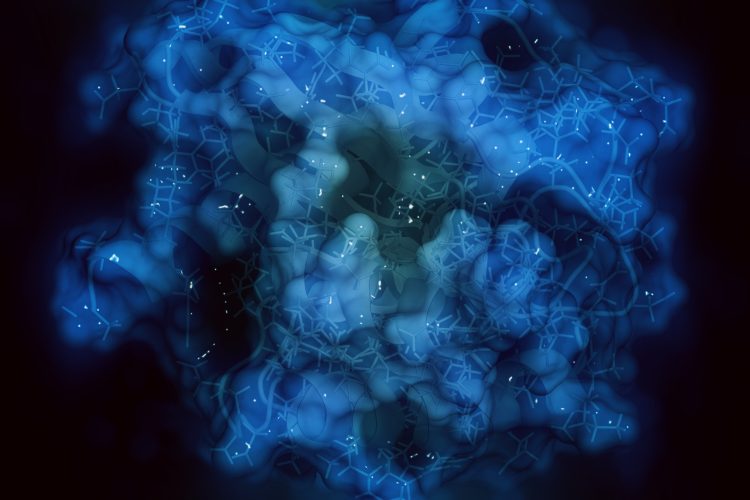Allosteric control sites in KRAS protein found
Posted: 5 January 2024 | Ellen Capon (Drug Target Review) | No comments yet
The first complete control map for any protein has been made for KRAS, and four potential drug targets have been discovered.


Scientists from the Centre for Genomic Regulation and the Wellcome Sanger Institute have found the allosteric control sites in the KRAS protein, the highly sought after targets for drug development. This study is the first complete control map for any protein.
One of the most commonly mutated genes in many types of cancer is KRAS. Named the ‘Death Star’ protein because of its spherical shape and a lack of an ideal site to target with drugs, it has a higher prevalence in deadly cancer types like pancreatic and lung cancers. Several studies have shown that oncogenic KRAS plays a central role in controlling tumour metabolism by orchestrating multiple metabolic changes including stimulation of glucose uptake, differential channelling of glucose intermediates, reprogrammed glutamine metabolism, increased autophagy, and macropinocytosis.1 Since its discovery in 1982, KRAS has been considered as ‘undruggable.’
Targeting KRAS’ allostery communication system, molecular signals which work through a lock and key mechanism, has been the only effective strategy to control it. To control a protein, molecular signals work by opening a lock, the active site, with a key, a chemical compound or drug. Proteins can also be influenced by a secondary lock elsewhere on its surface, known as an allosteric site. As a molecule binds to an allosteric site, it causes an alteration in the protein’s shape, which changes the protein’s activity or its ability to bind to other molecules.
In drug development, allosteric sites are preferred because they provide better specificity, reducing the likelihood of side effects. As well as this, they can change a protein’s activity more subtly, offering the opportunity to fine tune its function, and are typically safer and more effective than drugs targeting active sites. Unfortunately, allosteric sites are very elusive and only two drugs have been approved for clinical use in the four decades of research about KRAS. These drugs, sotorasib and adagrasib, attach to a pocket adjacent to the active site which induces an allosteric conformational change in the protein that stops its activation.
Co-author of the study Dr André Faure, staff scientist at the Centre for Genomic Regulation, said: “In this study we demonstrate a new approach that can map allosteric sites systematically for entire proteins. For the purposes of drug discovery, it’s like turning the lights on and laying bare the many ways we can control a protein.”
Four potential targets
The research team used deep mutational scanning to map the allosteric sites. This involved creating over 26,000 variations of the KRAS protein, changing only one or two amino acids at a time. The researchers checked how these different KRAS variations bind to six other proteins, including those critical for KRAS to cause cancer and then used AI software to analyse the data, detect allostery and identify the location of known and new therapeutic target sites.
Postdoctoral researcher and first author of the study Chenchun Weng explained: “The unique selling point of our method is its scalability. In this work alone we made more than 22,000 biophysical measurements, a similar number as the total ever made for all proteins before we started harnessing the remarkable strides in DNA sequencing and synthesis methodologies.”
The findings showed that KRAS has many more strong allosteric sites than expected. Mutations in these sites inhibited the protein’s binding to all three of its main partners, suggesting it is possible to broadly inhibit the activity of KRAS. A subset of these sites is especially interesting as they are located in four different pockets easily accessible on the surface of the protein and represent promising targets for future drugs.
The researchers think that ‘pocket 3’ is particularly favourable. It is located far away from the active site of KRAS and so has previously received very little attention from pharmaceutical companies.
It was also discovered that small alterations in KRAS can greatly alter its behaviour with its partners, making the protein prefer one over another. This could lead to new strategies which control the aberrant activity of KRAS without hampering its normal function in non-cancerous tissues. Sparing normal versions of KRAS means fewer side effects, and safer, more effective treatments. Researchers could also use this knowledge understand the biology of KRAS further and explain how the protein behaves in various scenarios, which could be key to determining its role in different cancer types.
Drugging the ‘undruggable’
The research shows that with the right tools and techniques, like the ones they used to map KRAS, new vulnerabilities can be uncovered for many different medically important proteins that have historically been considered ‘undruggable.’
“The nature of targeting allosteric sites means that the resulting drugs are likely to be safer, more effective treatments than the ones we have right now.”
Dr Ben Lehner, Senior Group Leader at the Wellcome Sanger Institute and senior author of the study concluded: “The big challenge in medicine isn’t knowing which proteins are causing diseases but not knowing how to control them. Our study represents a new strategy to target these proteins and speed up the development of drugs to control their activity. The nature of targeting allosteric sites means that the resulting drugs are likely to be safer, more effective treatments than the ones we have right now.”
This study was published in Nature.
Reference
1 Bryant KL, Der CJ, Kimmelman AC, Mancias JD. KRAS: feeding pancreatic cancer proliferation. Trends in Biochemical Sciences. 2014 January 3 [2023 December 19]; 39(2):91-100. Available from: https://doi.org/10.1016/j.tibs.2013.12.004
Related topics
Cancer research, Drug Development, Oncology, Protein
Related conditions
Cancer, Cancer Research, Lung cancer, Pancreatic cancer
Related organisations
Centre for Genomic Regulation, Wellcome Sanger Institute








